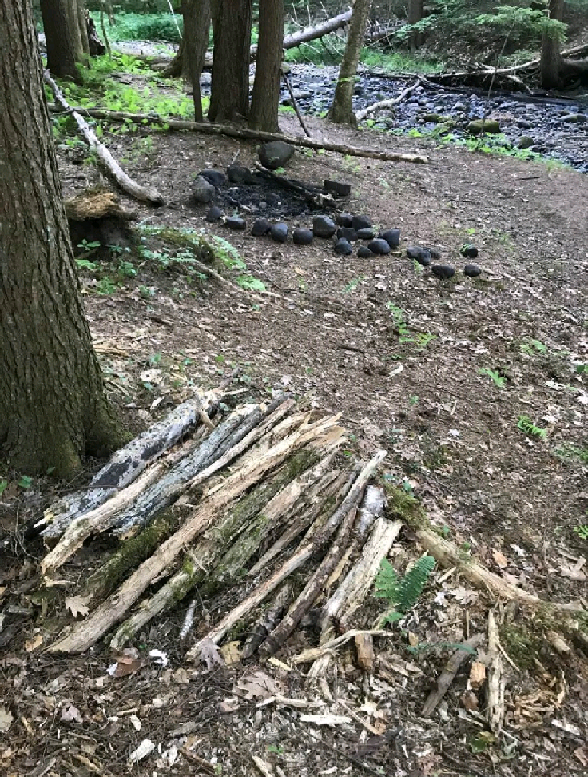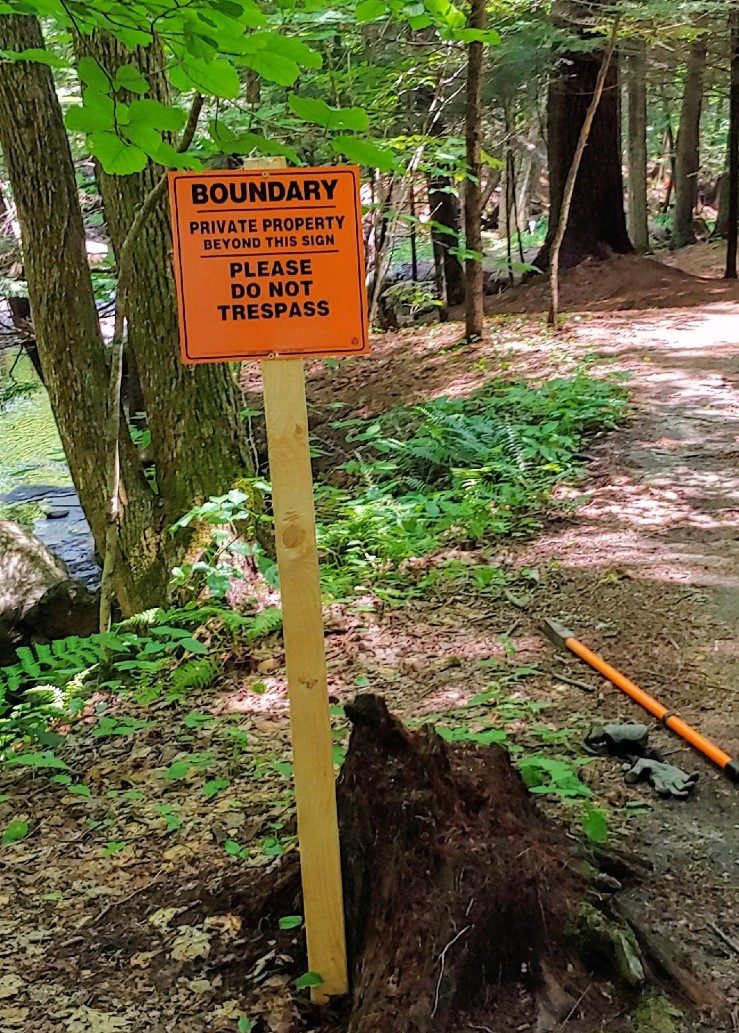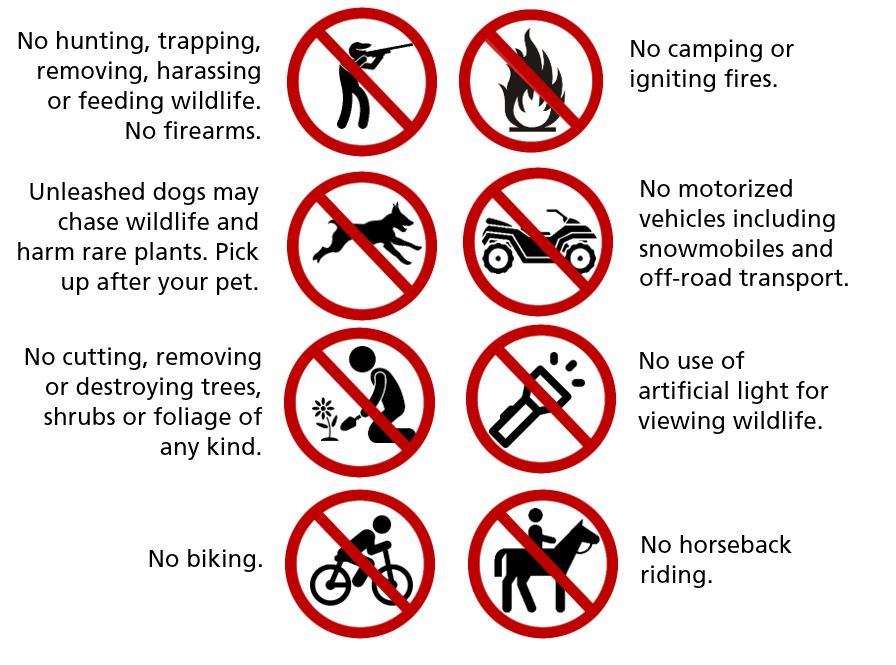Whether discovering botany for the first time or rekindling a love of trail running, people are spending more time outside, which means more visitors to Saratoga PLAN preserves.
Though we are over the moon about the number of new and familiar faces recreating along PLAN trails, we have also seen an uptick in degradation and trail misuse throughout the nature preserves. Unfortunate recent violations include campfires, unofficial trails, and large amounts of trash.
Bonnie Nightingale, PLAN’s stewardship coordinator, is on the front lines of handling violations and repairing subsequently damaged trails and preserve habitat. She says practicing proper trail and preserve ethics is a critical link in maintaining the health of the preserves.
“Everyone has a part to play,” Bonnie says.
FIRE SAFETY
In the past two months, Bonnie has been notified of multiple campfire pits discovered in PLAN nature preserves.

“Our love of fire is innate. There’s something wonderful about sitting around a campfire with friends and family,” she says. “But there’s a time and place for it. There are real dangers associated with having fires in locations where they’re prohibited.”
Having a campfire in undesignated locations is irresponsible. It becomes a greater challenge toreach and extinguish, should it spread. “Allowing campfires without having the resources to monitor them would pose too great of a risk for the natural environments we’ve conserved.”
She also urges visitors to be considerate of everyone’s health and safety, not only for the sake of wildlife, but also because the preserves are nestled in and around communities and homes.
Although Saratoga County is currently in a drought watch and ranked as “low” risk by DEC’s Division of Forest Protection, it is important to remember that conditions can change quickly in summer months.
“It’s important to choose a recreation site that is equipped to manage the type of activities that you are interested in,” Bonnie continues. Although fires of any type are forbidden at all Saratoga PLAN preserves, there are plenty of places that do allow them. Bonnie notes that the DEC offers no-fee primitive campsites that make a great location for a safe campfire.
ECOSYSTEM PROTECTION & TRESPASSING
Protecting natural habitats is at the core of PLAN’s mission, as is ensuring that the scenic beauty can be enjoyed by all for current and future generations.
For these reasons, trail systems are established to allow visitors to explore these little slices of the great outdoors without compromising the health of the land and its wild inhabitants. Venturing off trail tramples vegetation and causes serious damage to the very environment trail users set out to appreciate in the first place.
“When on the trail, we’re essentially visitors in someone else’s home,” Bonnie says. “Saratoga PLAN’s first goal in conserving land is to protect the natural resources.”
Here’s a pop quiz: what do you do when you encounter a muddy section of trail?
The answer: trudge right on through. Heck, you may even get a little giddy from embracing the muck. Skirting around the edge causes the path to widen, compacting soil and hindering vegetation regrowth, not to mention destroying habitat for critters.
“A typical foot path trail ranges from about 12-18 inches wide,” Bonnie explains further. During mud seasons, wet areas often widen to 5 or 6 feet because trail users try to avoid the mud. Although some vegetation may spring back with time, the richness and diversity of plant species does not return. In fact, it’s often the hardiest invasive species that take the opportunity to prevail. This not only negatively affects the diversity of the area, but also creates soils that are prone to increased erosion over time.
 And for those who identify as trailblazers, we understand your interest and desire for discovery. However, we ask that you stick to designated trails, too. In some cases, because PLAN preserves have neighbors, wandering off trail results in accidental trespassing. We care deeply about our neighbors and wish to respect their private property. Consider harnessing that inner explorer and joining our stewardship committee or our team of trail stewards! Help develop new trails and maintain existing ones.
And for those who identify as trailblazers, we understand your interest and desire for discovery. However, we ask that you stick to designated trails, too. In some cases, because PLAN preserves have neighbors, wandering off trail results in accidental trespassing. We care deeply about our neighbors and wish to respect their private property. Consider harnessing that inner explorer and joining our stewardship committee or our team of trail stewards! Help develop new trails and maintain existing ones.
There are other reasons to stick to designated trails, too. “They’ll take you to the greatest sights of the preserve!” Bonnie says.
CARRY IN CARRY OUT
We all have our reasons for escaping into nature, but one we have yet to hear is a love of seeing litter.
Now, we know that most folks don’t parade down the trail tossing trash from their packs, so how does it get there? Many times it’s accidental: a tissue that doesn’t make it back into a pocket or a water bottle that gets left behind after lunch.
Bonnie gives a simple suggestion to increase vigilance of your own belongings. “A simple rule to remember when going out on trail is to make sure that whatever you carry in, you also carry out,” she says. Yes, this includes your dog’s droppings.
RULES & REGULATIONS
The best way to ensure you are practicing proper trail ethics is to become familiar with the rules and regulations of the area you are visiting. Bonnie reminds us of an important note: “Rules and regulations vary across organizations. What is permitted in some regions may not be in others.”
We’re doing our part, too. We’re looking into how to better communicate our rules and regulations and improving signage at our preserves. In the meantime, thank you for leading by example by practicing proper trail ethics during your visits to Saratoga PLAN preserves.
SARATOGA PLAN PRESERVE RULES & REGULATIONS
In order to provide a safe and enjoyable experience for all, please note activities that are not permitted on PLAN preserves, unless otherwise noted.

Thank you for doing your part to ensure the health and safety not only of Saratoga PLAN preserves, but also of our community as a whole.
